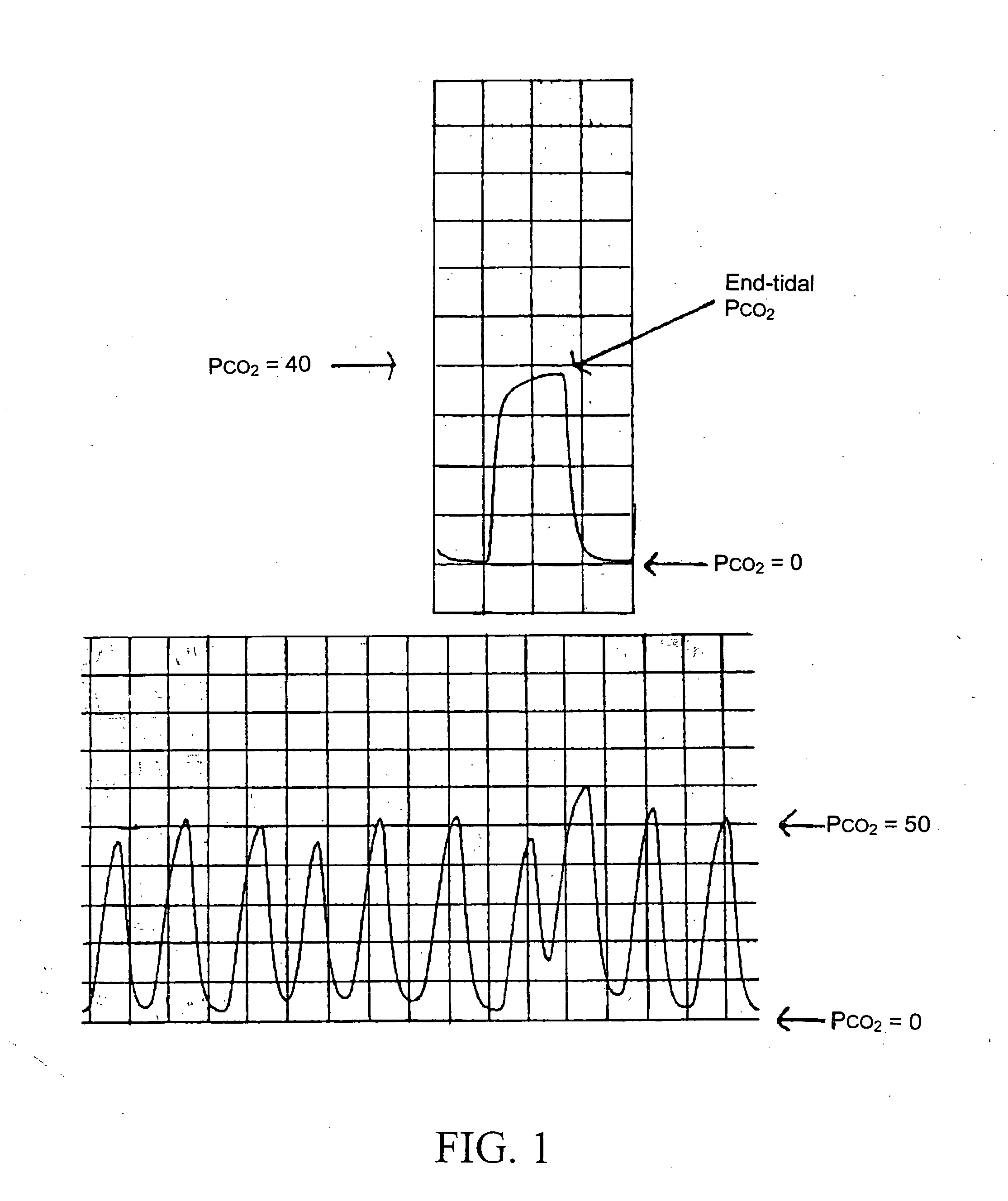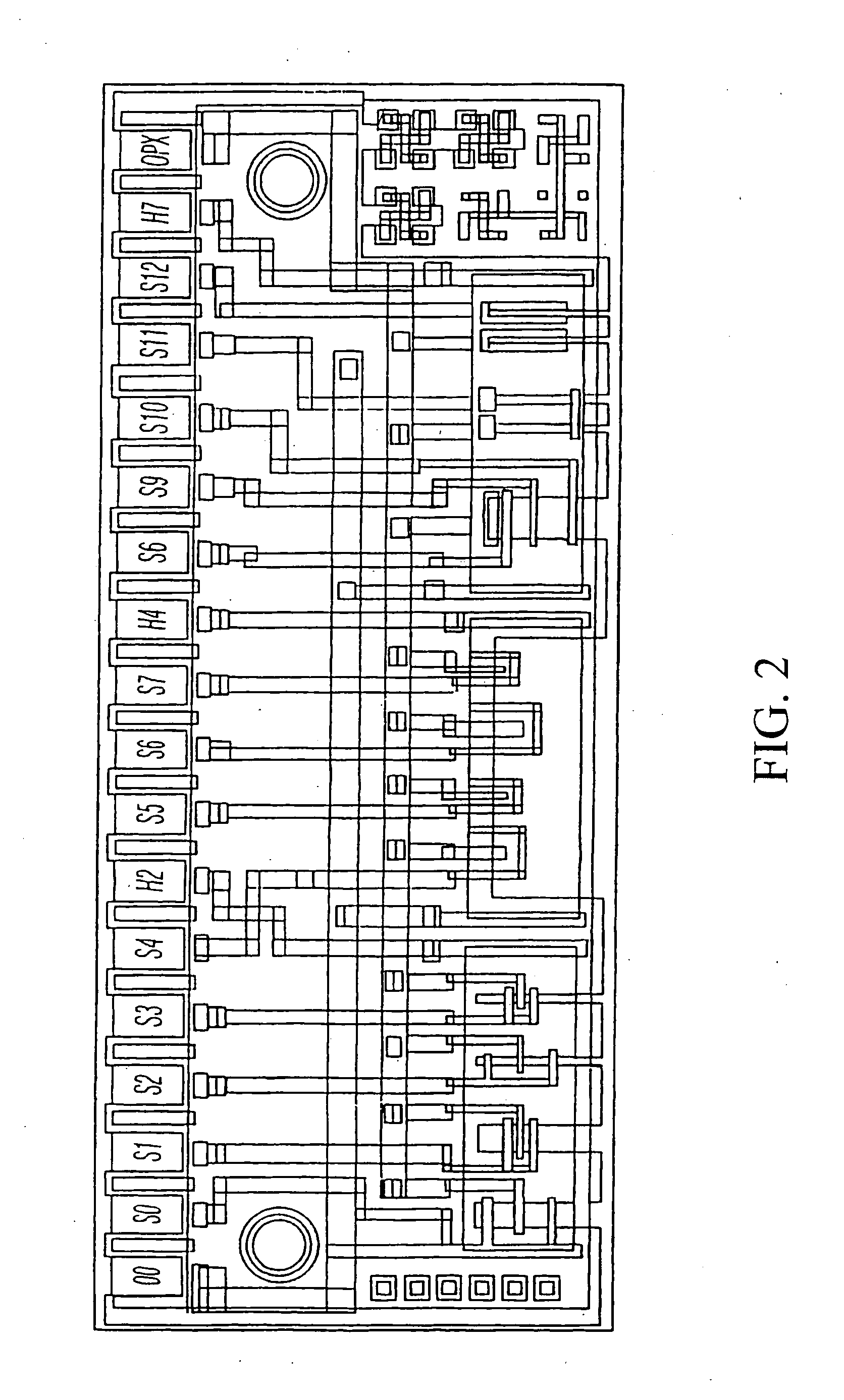System and method for therapeutic drug monitoring
a drug monitoring and system technology, applied in the field of non-invasive monitoring of substance/compound concentrations in blood, can solve the problems of ineffectiveness of certain medications, side effects of certain medications, toxic to the body, etc., and achieve the effects of accurate evaluation of pharmacodynamics and pharmacokinetics, cost-effective and frequen
- Summary
- Abstract
- Description
- Claims
- Application Information
AI Technical Summary
Benefits of technology
Problems solved by technology
Method used
Image
Examples
example 1
Estimation of Free Blood Propofol Concentration During Intravenous Administration by Measurement of Exhaled Breath Propofol with a SAW-Based Sensor System of the Invention
[0125] Propofol, an intravenous anesthetic agent, is frequently administered by continuous infusion to provide sedation to patients in the intensive care unit (ICU). Propofol is extremely lipophilic and also binds strongly to proteins and red blood cells. It is estimated that only 1-3% of propofol is free in plasma. It is this free fraction of propofol that is responsible for the desired therapeutic effect.
[0126] Often during a clinical procedure, it is desirable to periodically stop the propofol infusion to perform neurological examinations on patients, particularly those who have suffered a brain injury. Unfortunately, depending on the pharmacodynamics of propofol in an individual patient, the free blood concentration can be greater or less than that estimated by population pharmacodynamics and pharmacokinetics...
example 2
Estimation of Antibiotic Blood Concentrations Using Exhaled Breath Measurements as a Surrogate
[0128] Patients requiring intravenous antibiotics for serious infections often require frequent blood sampling to obtain antibiotic concentrations. Often “peak” and “trough” levels are drawn to insure that the blood concentration of drug is adequate just prior to giving the next dose. Inadequate blood levels can predispose to bacteria developing drug resistance. A sensor for analyzing antibiotic markers in exhaled breath can be calibrated against a peak and trough level and for all subsequent measurements for use as a surrogate for measuring blood antibiotic levels and to subsequently direct therapy.
examples 3
Exhaled Breath Anti-Seizure Medication Levels as a Surrogate for Blood Concentration.
[0129] Patients taking anti-seizure medications require frequent testing and analysis of blood samples to determine the concentration of the medication in their blood. Many anti-seizure medications have a narrow therapeutic range and low blood levels can lead to an increased frequency of seizures, while high levels can lead to significant toxicity. A sensor for detecting in exhaled breath anti-seizure medication markers can be calibrated against the blood anti-seizure medication concentration and used to monitor blood levels without the patient having to visit the physician or a laboratory to have blood drawn. The exhaled breath concentrations would alert the physician when the drug dose needs to be adjusted.
PUM
 Login to View More
Login to View More Abstract
Description
Claims
Application Information
 Login to View More
Login to View More - R&D
- Intellectual Property
- Life Sciences
- Materials
- Tech Scout
- Unparalleled Data Quality
- Higher Quality Content
- 60% Fewer Hallucinations
Browse by: Latest US Patents, China's latest patents, Technical Efficacy Thesaurus, Application Domain, Technology Topic, Popular Technical Reports.
© 2025 PatSnap. All rights reserved.Legal|Privacy policy|Modern Slavery Act Transparency Statement|Sitemap|About US| Contact US: help@patsnap.com


